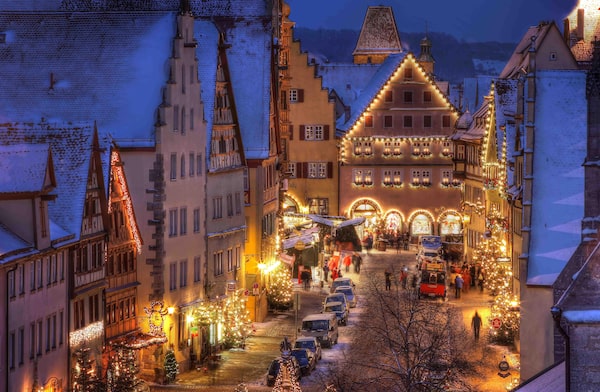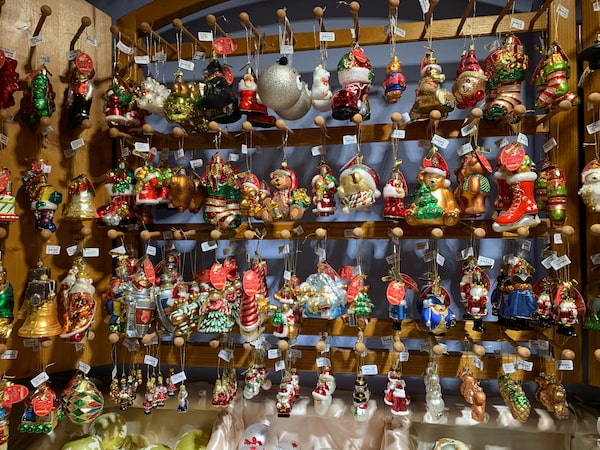
The festive holiday feeling remains strong in Bavaria despite new COVID-19 variants and renewed restrictions.The Globe and Mail
Late in the spring of 2020, I lost the ability to make sense of the calendar. The pandemic lockdown made one week indistinguishable from the next. With a second COVID-19 holiday season upon us, however, I’ve decided to pin a different kind of calendar to my wall: an Advent calendar, which even in the face of new variants and renewed restrictions, continues to hold its ground as an artifact of anticipation and celebration.
Across Germany, and especially in Bavaria, where Advent calendars were first printed in 1902, they begin to populate store shelves the day after Halloween. By the time I arrived in Munich in late November, you could find them in every department store, supermarket and gift shop. A century ago, Advent calendars were simple paper designs in the form of story books, paper clocks with a single metal hand that was moved ahead once every 24 hours, or, in their best-known iteration, festive, beglittered sheets of cardstock with 24 little windows concealing an illustration or a piece of chocolate. Since then, the annual treasures have undergone a process of sophistication (and marketing). Currently, one can count down to Christmas with 24 high-end fruit preserves, beauty products, wine, tea and even sex toys. But the point of these calendars isn’t the little gifts inside. It’s the way that they build excitement for the holiday season.
This is the second winter in a row that Bavaria, like many regions in Germany, has had to cancel its Weihnachtsmarkt, the beloved Christmas markets selling ornaments, crafts and street food, because of COVID-19. Still, the festive holiday feeling remains strong, without Black Friday sales or the endless variations of Santa Baby blaring through department-store speakers.
West of Nuremberg in Rothenburg ob der Tauber, the Kathe Wohlfahrt Christmas store sells holiday decorations year-round to tourists who visit the medieval Franconian town with its centuries-old walled centre and fairy-tale half-timbered houses. The store itself is located in such a house, with the interior laid out like a miniature Bavarian village. Shoppers wander the narrow “streets,” passing displays of traditional German ornaments made from hand-painted glass, carved wood and woven straw shapes bound with bright red string. Upstairs is the tiny but mighty Christmas Museum with its antique holiday treasures and cache of more than 1,200 Advent calendars.
The collection housed here includes pieces by Gerhard Lang, the man credited with creating the first of these now mass-produced holiday staples. Lang’s work ranged from simple, one-dimensional paper calendars to three-dimensional cardstock structures – little versions of the Bavarian half-timbered houses that the city takes such care to preserve. These early- and mid-19th-century creations weren’t items to be used once and discarded. Instead, they were lovingly reassembled year after year.

A display of traditional German ornaments in Rothenburg ob der Tauber.Corrina Allen/The Globe and Mail
In Munich and Nuremberg, I mingled outdoors with locals and visitors revelling in the seasonal return of steaming mugs of amaretto-spiked gluhwein, crispy sugar-dusted, snow-ball-shaped schneeballen pastries, the crescent-shaped almond cookies called vanillekipferl, and warm paper cones of roasted chestnuts or quarkbällchen, a chewy, cheesy fried treat. In the market squares, people stood in small groups around high tables, masks pulled down to their chins, indulging. At Munich’s daily food market, Viktualienmarkt, hot cocoa was served in cups left over from the cancelled 2020 Christmas season, a (cost-saving) nod toward the resilience and endurance of tradition.
And then there are the decorations: I arrived in Nuremberg to find the entire façade of Le Méridien Grand Hotel draped in thousands of silver-blue lights. Hovering over the heads of holiday shoppers in the city’s pedestrian zone, the largest and oldest in Europe, were dozens of angels outlined in white and gold bulbs, an echo of the traditional tree-topper favoured by locals. In Munich, lit trees sat in the doorways of restaurants, shops and museums and Advent wreaths, with their four red candles representing the four Sundays of the season, had a place of honour inside every church.
Like the calendars, these are a sign that it’s time to begin to anticipate the season. These traditions remind us that something special is approaching – not a gift-buying deadline, but a time to reconnect and celebrate with friends and family (even if this year it’s through a screen). They keep alive the memories we made during holiday seasons past and are a powerful way to invoke those feelings once again. They are a way to look forward while taking with us the best parts of the past.
The writer travelled as a guest of the German National Tourist Board. The organization neither reviewed nor approved this article.
Keep up to date with the weekly Sightseer newsletter. Sign up today.